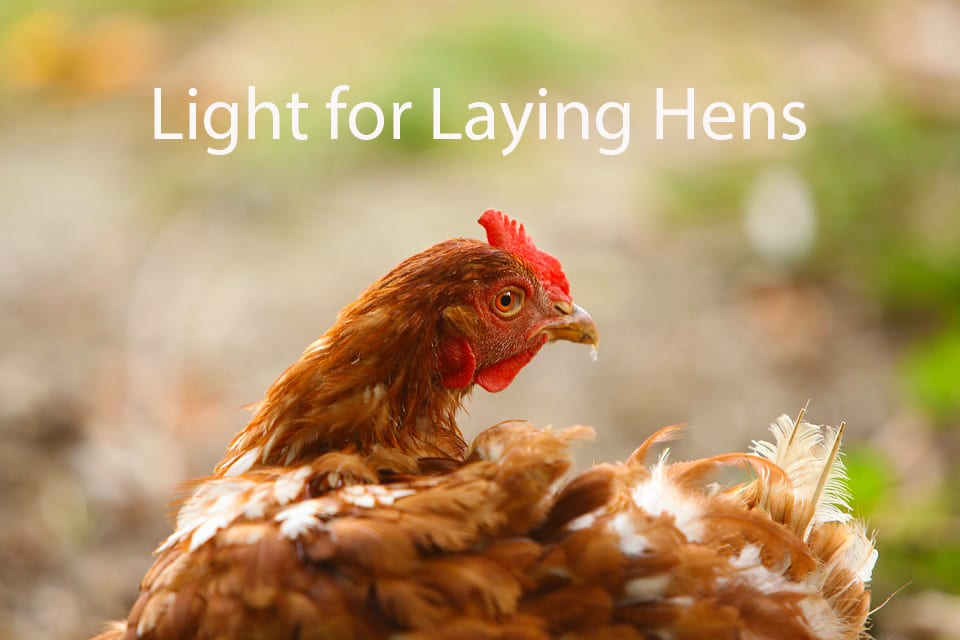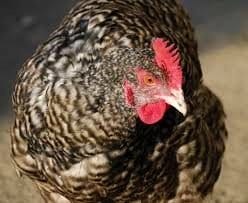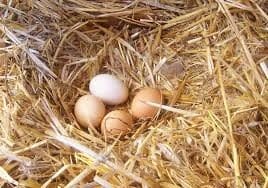
24 Apr Light for Laying Hens
We can all feel it in the air – nights are getting cold, days are getting shorter, rain drops occasionally drop on our heads – Autumn is here to be soon followed by winter.
And laying hens – they feel it too, of course; and they have a unique way of reacting to this change of season, especially to the shortening of daylight hours. See what can be done do to help them get through this autumn blues…
Laying hens need a certain amount of daylight in order to maintain egg production. Furthermore, they react very quickly to a decreasing in daylight hours by sharply dropping, sometimes even ceasing, egg production.
All poultry layers will produce eggs at a higher rate when the survival chance of their offspring is better. Winter, for obvious reasons, reduces, or at times eliminates the offspring’s survival chance. One may think it is the cold weather causing this drop in egg production, but this is not the case. The shortening length of daylight is the trigger for the birds to get in a ‘winter mode’ of egg production.
The endocrine (hormonal) system is setting the rate of the laying hen egg production. A controlling component of the endocrine system is the pituitary/pineal gland, located behind her eyes and above her mid brain. As daylight lengthens, hormones are produced and sent to the ovary, allowing stimulation of egg production. Just the opposite happens as daylight is shortening (winter is approaching): less hormones are sent, which is a ‘shut down egg production’ signal.
We could easily maintain a constant egg production by adding a few hours of artificial light between March and October. The endocrine system will not be triggered to send a ‘shut down’ signal and egg production will stabilise. It is important to emphasize that birds’ welfare is not affected by adding light. After all, birds are producing eggs in equatorial zones too…
What can be done, practically?
Two useful facts to remember:
1. 14-16 per day hours of daylight are required for maintaining a constant egg production in laying hens.
2. Adding artificial light by creating a fixed ‘first light’ time in the mornings is an optimal way to increase egg production.
There are many light timers on shops’ shelves. They vary from very simple and relatively cheap (one on/off per day) units to more expensive (several on/off times, backup battery, digital display etc.) units.
Sunrise (in Western Australia) in April occurs around 6:30 AM and can occur as late as 7:15 AM in June.
Sunset (in Western Australia) in April occurs around 5:55 PM and can occur as early as 5:20 PM in June.
Adding no artificial light will only offer 11 ½ hours of daylight per day in April, and just 10 hours in June. We , therefore, can consider adding up to 4-6 hours a day of artificial light, providing the layers with 14-16 hours per day of light. One possible way is setting up the artificial lights to start at 4:00 AM every morning for 3 hours and again at 5:00 PM every night for 2 more hours.
Birds will then be:
- Exposed to continuous light for 16 hours a day (4:00 AM to 8:00 PM)
- Will have sufficient dark time
- Will have a fixed daily routine of light starting time.
This is, of course, just an example, which can be changed as natural daylight changes through the year.
A rule of thumb for light intensity – feed should be clearly seen when standing over the feeders. Yellow-orange coloured lights are better, but any warm-white light will do too. One needs to check and ensure that the light timer is properly set up at all times, especially after a power cut.





Clancy Mercer
Posted at 11:12h, 28 MarchThis blog was really informative and very useful. It was definitely worth the read and I’ll be investing in some lights. I hope my girls will continue laying through the winter now!
shaun Peter hester
Posted at 02:07h, 18 SeptemberVery interesting read .
Justin
Posted at 20:02h, 05 JuneHi. I read this information a couple of weeks ago and went ahead to install a warm white light on a timer. Absolute word of no lie, my hens went from no eggs for 5-7 weeks to after 7 days from installing the light, I have been getting 2-3 eggs per day. Remembering I only have 3 hens. Lol! So yes this was very useful information and works! Thanks again. Justin from Kilmore
Thompson and Redwood
Posted at 03:23h, 06 JuneHi Justin, we’re so pleased to hear that this article helped you get your girls laying again! Hope you’ve got some good wintery egg recipes to help you enjoy your yummy fresh eggs.